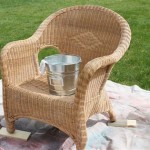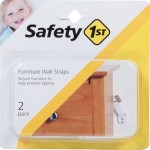How to Get Stickers Off of Furniture
The presence of stickers on furniture, whether remnants of childhood play or misplaced labels, can detract from its aesthetic appeal and even diminish its value. Removing these adhesive blemishes requires a careful approach, as aggressive techniques can damage the underlying finish. This article outlines various methods for safely and effectively removing stickers from furniture, considering different types of surfaces and adhesives.
Assessing the Situation: Identifying the Surface and Adhesive
Before attempting any removal method, it is essential to identify the type of furniture surface and the nature of the adhesive. Furniture surfaces can range from delicate wood veneers and polished surfaces to more robust materials like laminate and metal. Similarly, sticker adhesives vary in strength and composition. A thorough assessment allows for the selection of the most appropriate and least abrasive removal technique, minimizing the risk of damage. The age of the sticker is also a factor; older stickers tend to have adhesives that have hardened and become more difficult to remove.
Different wood finishes, for example, require different approaches. A delicate antique finish will need a gentler touch than a modern, durable polyurethane coating. Similarly, a sticker on metal is less likely to be damaged than a sticker on painted furniture. Consider testing any method in an inconspicuous spot first to ensure it does not damage the finish or cause discoloration.
When examining the adhesive, it is important to consider if it is dry and brittle or still pliable and sticky. Brittle adhesives often respond well to heat, while sticky adhesives may require solvents. Sometimes the type of sticker paper used can also make a difference. Glossy paper tends to resist moisture, while matte paper absorbs it more readily, affecting the removal process.
Heat-Based Methods: Gentle Softening Techniques
Heat is a common and effective method for softening adhesives, making them easier to peel away from the furniture surface. The key is to apply heat gently and controllably to avoid damaging the finish. A hairdryer is a widely accessible and versatile tool for this purpose. Set the hairdryer to a low or medium heat setting and direct the warm air onto the sticker for a short period, typically 30 seconds to a minute. The heat will soften the adhesive, allowing the sticker to be peeled off slowly and carefully. It is crucial to maintain a safe distance between the hairdryer and the furniture surface to prevent overheating and potential damage, particularly on sensitive wood or veneer.
Another option for applying heat is to use a heat gun, but this tool requires extreme caution. Heat guns generate much higher temperatures than hair dryers, and improper use can easily scorch or warp furniture finishes. If using a heat gun, set it to the lowest possible setting and keep it moving constantly to avoid concentrating the heat in one spot. It is recommended to practice on an inconspicuous area first to get a feel for the heat gun's intensity and effect on the finish.
For smaller stickers, a warm, damp cloth can also be effective. Apply the cloth to the sticker and let it sit for a few minutes to allow the heat and moisture to penetrate the adhesive. This method is particularly useful for stickers on surfaces that might be sensitive to direct heat, such as painted finishes or certain types of wood.
After applying heat, use a plastic scraper or credit card to gently lift an edge of the sticker. Work slowly and carefully, peeling back the sticker at a shallow angle. If the sticker resists, apply more heat and continue peeling. Avoid using metal scrapers, as they can easily scratch the furniture surface. If residue remains, proceed with solvent-based methods after cooling the area.
Solvent-Based Methods: Dissolving Stubborn Adhesives
When heat alone is insufficient, solvent-based methods can be employed to dissolve stubborn sticker adhesives. A range of solvents can be used, each with varying degrees of effectiveness and potential risk to the furniture finish. It is imperative to test any solvent in an inconspicuous area before applying it to the entire sticker to ensure it does not damage or discolor the surface.
Rubbing alcohol (isopropyl alcohol) is a relatively mild solvent that can be effective for removing many types of sticker residue. Apply a small amount of rubbing alcohol to a clean cloth and gently dab the sticker residue. Allow the alcohol to sit for a few minutes to dissolve the adhesive, then wipe away the residue with the cloth. Repeat as needed until the residue is completely removed. Rubbing alcohol is generally safe for most furniture finishes, but it is still advisable to test it first.
Another option is white vinegar, a natural and readily available solvent. Like rubbing alcohol, white vinegar is relatively mild and can be effective for dissolving sticker residue. Apply a small amount of white vinegar to a clean cloth and gently dab the sticker residue. Allow the vinegar to sit for a few minutes, then wipe away the residue with the cloth. White vinegar can be particularly useful for removing residue from glass or metal surfaces.
For more stubborn adhesives, stronger solvents such as mineral spirits or adhesive removers can be used. However, these solvents should be approached with caution, as they can potentially damage furniture finishes. Always wear gloves and work in a well-ventilated area when using these solvents. Apply a small amount of the solvent to a clean cloth and gently dab the sticker residue. Allow the solvent to sit for a few minutes, then wipe away the residue with the cloth. Be sure to thoroughly clean the area with a damp cloth after using these solvents to remove any remaining residue.
Commercial adhesive removers are specifically formulated to dissolve sticker residue and other adhesives. These products often contain a blend of solvents and surfactants that work together to break down the adhesive bond. Follow the manufacturer's instructions carefully when using adhesive removers. Apply the remover to the sticker residue, allow it to sit for the recommended time, then wipe away the residue with a clean cloth. Be sure to test the remover in an inconspicuous area first to ensure it does not damage the furniture finish.
After using any solvent, it is important to clean the area thoroughly with a damp cloth and then dry it with a clean, soft cloth. This helps to remove any remaining solvent residue and prevent damage to the furniture finish. Consider applying a furniture polish or wax to restore the shine and protect the surface.
Alternative Methods: Utilizing Household Items
Beyond heat and solvents, several alternative methods utilizing common household items can be surprisingly effective for removing stickers from furniture. These methods are often less harsh than solvents and can be a good option for delicate surfaces.
One simple and effective method is using cooking oil. Apply a small amount of vegetable oil, olive oil, or coconut oil to the sticker residue. Allow the oil to sit for several hours or even overnight to soften the adhesive. The oil penetrates the adhesive and weakens its bond with the furniture surface. After soaking, gently wipe away the residue with a clean cloth. The oil also helps to protect the furniture finish and can even leave it with a slight sheen.
Mayonnaise, another common household item, can also be used to remove sticker residue. Mayonnaise contains oil and other ingredients that help to dissolve the adhesive. Apply a thick layer of mayonnaise to the sticker residue and allow it to sit for 30 minutes to an hour. Then, wipe away the mayonnaise with a clean cloth. The residue should come off easily, leaving the furniture surface clean and undamaged.
Baking soda paste can be used as a mild abrasive to scrub away sticker residue. Mix baking soda with a small amount of water to form a thick paste. Apply the paste to the sticker residue and gently scrub with a soft cloth or sponge. Be careful not to scrub too hard, as baking soda can be mildly abrasive and may scratch delicate finishes. Rinse the area with a damp cloth after scrubbing to remove any remaining baking soda paste.
Pencil erasers, particularly the white polymer erasers, can be surprisingly effective for removing sticker residue from certain surfaces. Gently rub the eraser over the residue, using a back-and-forth motion. The eraser will lift the residue without damaging the furniture finish. This method is particularly useful for removing small amounts of residue from smooth surfaces.
When using any of these alternative methods, it is important to test them in an inconspicuous area first to ensure they do not damage the furniture finish. After removing the sticker residue, be sure to clean the area with a damp cloth and then dry it with a clean, soft cloth.
The successful removal of stickers from furniture hinges on a patient and methodical approach. By carefully assessing the surface, adhesive, and utilizing the appropriate techniques, the integrity of the furniture can be preserved while restoring its original aesthetic.

How To Get Stickers Off Wood 10 Easy Solutions

3 Simple Ways To Remove Sticker Or Sticky Tape Its Residue From Wood Furniture Floor Table Youtube

How To Get Stickers Off Wood 10 Easy Solutions

The Best Way To Get Stickers Off Furniture Let S Paint

How To Remove Sticky Residue Step By With S Cleanipedia

How To Get Stickers Off Wood 10 Easy Solutions

How To Remove Sticker Residue

How To Get Stickers Off Wood 10 Easy Solutions

How To Remove Adhesive From Cabinets 2024 Glennbeckreport Com

How To Remove Sticker From Wood Furniture Youtube







